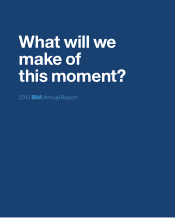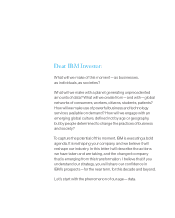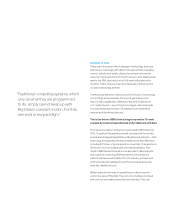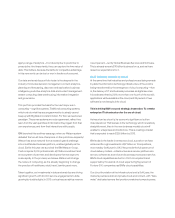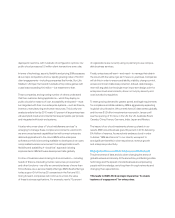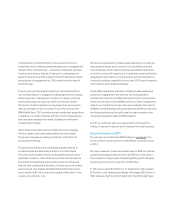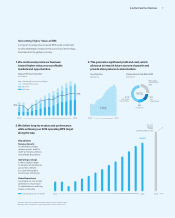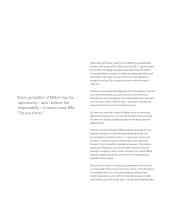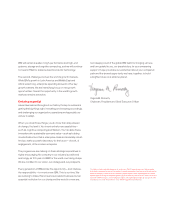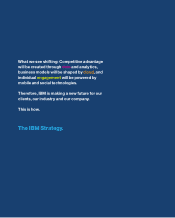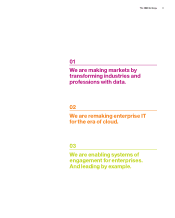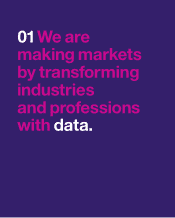IBM 2013 Annual Report Download - page 3
Download and view the complete annual report
Please find page 3 of the 2013 IBM annual report below. You can navigate through the pages in the report by either clicking on the pages listed below, or by using the keyword search tool below to find specific information within the annual report.A planet of data
Today, every discussion about changes in technology, business
and society must begin with data. In its exponentially increasing
volume, velocity and variety, data is becoming a new natural
resource. It promises to be for the 21st century what steam power
was for the 18th, electricity for the 19th and hydrocarbons for
the 20th. This is what we mean by enterprises, institutions and
our planet becoming smarter.
Thanks to a proliferation of devices and the infusion of technology
into all things and processes, the world is generating more
than 2.5 billion gigabytes of data every day, and 80 percent of
it is “unstructured”—everything from images, video and audio
to social media and a blizzard of impulses from embedded
sensors and distributed devices.
This is the driver of IBM’s first strategic imperative: To make
markets by transforming industries and professions with data.
The market for data and analytics is estimated at $187 billion by
2015. To capture this growth potential, we have built the world’s
broadest and deepest capabilities in Big Data and analytics—both
technology and expertise. We have invested more than $24 billion,
including $17 billion of gross spend on more than 30 acquisitions.
We have 15,000 consultants and 400 mathematicians. Two-
thirds of IBM Research’s work is now devoted to data, analytics
and cognitive computing. IBM has earned 4,000 analytics
patents. We have an ecosystem of 6,000 industry partners and
1,000 university partnerships around the world developing new,
analytics-related curricula.
IBM provides the full array of capabilities our clients need to
extract the value of Big Data. They can mine multiple structured
and unstructured data sets across their business. They can
“ Traditional computing systems, which
only do what they are programmed
to do, simply cannot keep up with
Big Data in constant motion. For that,
we need a new paradigm.”

